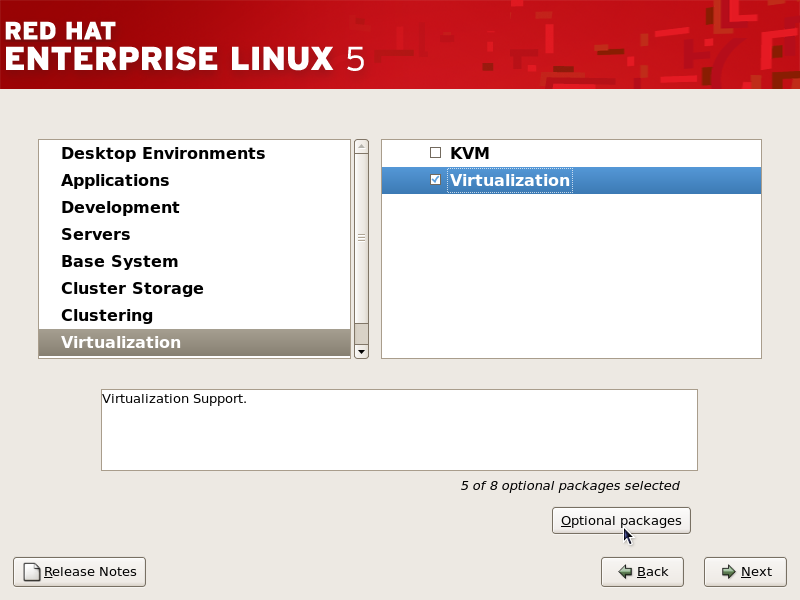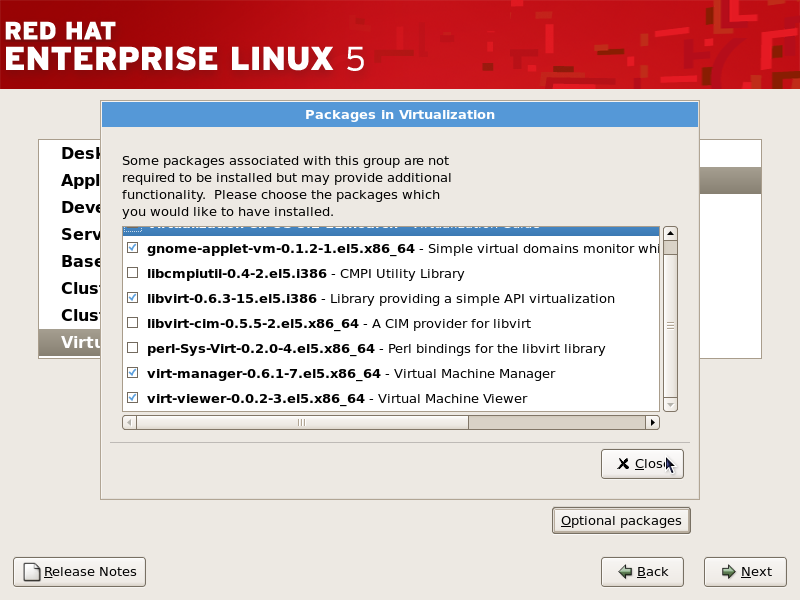Chapter 6. Installing the virtualization packages
yum command.
6.1. Installing Xen with a new Red Hat Enterprise Linux installation
Note
- Start an interactive Red Hat Enterprise Linux installation from the Red Hat Enterprise Linux Installation CD-ROM, DVD or PXE.
- You must enter a valid installation number when prompted to receive access to the virtualization packages. Installation numbers can be obtained from Red Hat Customer Service.
- Complete all steps until you see the package selection step.Select the Virtualization package group and the Customize Now radio button.
- Select the Virtualization package group. The Virtualization package group selects the Xen hypervisor,
virt-manager,libvirtandvirt-viewerand all dependencies for installation. Customize the packages (if required)
Customize the Virtualization group if you require other virtualization packages.Press the Close button then the Forward button to continue the installation.
Important
This section describes how to use a Kickstart file to install Red Hat Enterprise Linux with the Xen hypervisor packages. Kickstart files allow for large, automated installations without a user manually installing each individual system. The steps in this section will assist you in creating and using a Kickstart file to install Red Hat Enterprise Linux with the virtualization packages.
%packages section of your Kickstart file, append the following package group:
%packages @xen
%packages
@xen
Note
xen-ia64-guest-firmware
xen-ia64-guest-firmware


